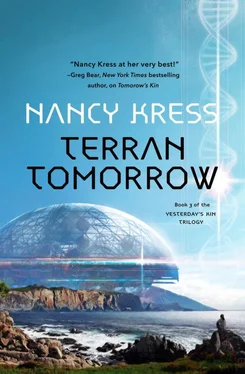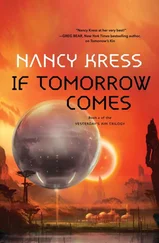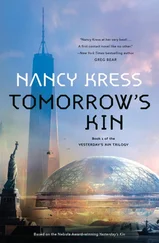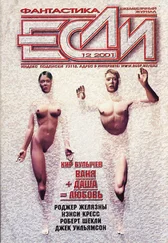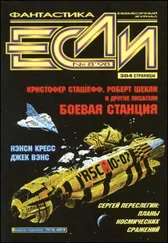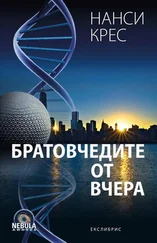The room had two walls of metal and two of rough slats, with metal Army-issue chairs and a table of what had once been exquisitely polished wood. After ten years, it bore cup stains, gouges, and a long crack in the middle vaguely resembling the east coast of Africa.
More people filed in and seated themselves. Marianne sat beside Zack and set down a cup of what passed here for coffee, mostly made from chicory. She said to him in a low voice, “I’m astonished by how smoothly—how normal —work seems to proceed here.”
“Well, no, not exactly. We lost so much data and equipment.” The understatement of the year. Maybe of the century. They’d lost the CDC, the US Army Medical Research Institute for Infectious Diseases, the gene labs at UC Berkeley and Harvard—and that was only in biology. Fermi Lab, CERN, the Laser Interferometer Gravitational-Wave Observatory, Livermore, and Cold Harbor…. Some of these places still existed as rusting and abandoned facilities in which everyone had died; some had been nuked in the first chaos of the most ill-defined war in history. Participants hadn’t even been sure who were the other combatants.
And what was “normal” about three Worlders and two Terrans, who had all jumped twenty-eight years and a hundred and three light-years, sitting on metal folding chairs around a table, waiting to hear about a weaponized microbe? Marianne, looking tired and rubbing her forehead. Claire Patel, who was not a geneticist but a physician. Ka^graa, demoted by circumstances from being the most celebrated scientist on his planet to a nobody on this one. Glamet^vor¡, looking sulky. Jane, the translator, who might or might not have enough scientific terminology to actually translate.
Zack plunged in, stopping after each sentence for Jane to translate. “I’d like to first talk about how R. sporii was weaponized, and then what we’re trying to do about it. As you know, R. sporii is related to the paramyxoviruses, a diverse group. Humans and birds were always the natural hosts for the paras, and the human and avian forms share structural features and replication mechanisms. In fact, the Respirovirus may be basal to the bird form, the avulavirus-rubulavirus clade.”
Was he already beyond Jane’s translation ability? He wanted to include enough technical terms to brief Marianne and Claire, but he had no idea what Ka^graa and Glamet^vor¡ could grasp. However, Jane didn’t interrupt, and the two World men seemed to be following. She must have really prepared for this. Zack was impressed with her intelligence and determination.
He continued, “The whole family of paramyxoviridae is genetically stable, but it does have a P gene that can produce multiple proteins not needed for replication. The Gaiists used that, plus histone modification and a host of other tricks. It’s a beautiful piece of work, really.”
Jane looked up sharply at that, but Marianne nodded. She, at least, understood impersonal admiration for a complicated, if evil, piece of scientific work.
“ R. sporii lent itself to modification because it was a pretty large virus to begin with, as viruses go, and now it’s bigger still. The genemods to R. sporii did three things. First, they combined the spore virus with the bird virus. Second, they boosted the virus’s virulence in humans, while leaving birds as infected carriers who don’t get sick. Third, genemods aerosolized R. sporii avivirus , making it airborne. It thrives in bird droppings, and when they dry out in warm summer weather, the air is full of the most deadly disease ever known to human beings. Its exposure time plotted versus parts per million is very small, even for an airborne pathogen, which means you don’t need much of it to infect a population. Its kill rate is higher than smallpox.
“The Gaiists were trying to wipe out most of the human race, not just now but in any foreseeable future. That’s why they needed the birds as a second reservoir. R. sporii avivirus kills so many of its human hosts that the disease would die out if birds didn’t keep it alive to infect the next generation.”
Glamet^vor¡ spoke angrily to Jane, who said, “He asks what you will do about this terrible evil.”
“I’m coming to that. We have three scientific teams here at Lab Dome. Let me describe them briefly, and then, if you like, you can question me or find the team members and question them. First, the vaccine team is trying to develop a vaccine against RSA. So far, no luck.
“The immunology team is trying to change or bolster the human immune response to better cope with R. sporii avivirus . They hope to develop a drug that mimics proteins that seem to protect the small number of people with natural immunity, as well as the survivors. Apparently, you can’t get this disease twice. So far, no luck.
“The gene-drive team is working on two gene drives, on a last resort. The first—”
Jane said, “What is ‘last resort,’ please?”
“Something we will do only if all else fails. We’re trying to create a gene drive—that’s a bit of engineered DNA that will paste itself into the chromosomes of both male and female sparrows, so all the offspring inherit it. The first gene drive would make it impossible for sparrows to contract RSA. That’s the harder drive to create, and so far we haven’t succeeded. The second drive, which we haven’t succeeded at either but we’re closer, produces changes in the DNA of the next generation of birds that makes all males sterile. The computer model says that within fifty generations, all sparrows would be gone from North America. Longer for the rest of the world, but selective genetic sweep will eventually get there.”
While Jane translated, Claire said, “ All sparrows? You’ll wreck the global ecology all over again!”
Zack said, “I said it was a last resort.”
Marianne said, “This was tried in Africa with Anopheles mosquitoes before I left Terra. It was working. What happened?”
“The Collapse happened,” Zack said, more harshly than he’d intended. “I said that the sterility drive was a last resort.”
Claire echoed herself. “ All sparrows? Didn’t they… wasn’t that tried once in China?”
Jane finished translating. Glamet^vor¡ said something to her, his face twisted. Jane frowned at him. Glamet^vor¡ turned to Zack and demanded in heavily accented English, “All things you do? Three things—no things work? Now?”
“No,” Zack said. “None of them work now.” And looked to be a long way from ever doing so.
Glamet^vor¡ said something in his own language. It needed no translation: his contemptuous face and hand gesture were graphic. He stood and stalked out.
Jane said, “Please to excuse Glamet^vor¡’s unpolite. He… has the headache.”
No one spoke until Marianne said, “The virophage in our blood…”
“The immunology team is working with it now. It would help if we had the samples you already cultured on your ship.”
“Yes. Meanwhile, I’d like to ask you more about both the potential vaccine and the gene drive. Have you found a homing endonuclease to reliably cut or insert—”
Zack listened patiently. He wanted to go back to Enclave Dome and check on Caitlin. He wanted to go back to work with Toni Steffens on the gene drive, even though it meant putting up with her calling it the “bird basher.” He wanted these scientists, who could not contribute to any of the desperate and unsuccessful trials going forward under this inverted alien bowl, to leave him alone.
And if he had to sit here and patiently answer Marianne’s questions, he hoped to hell that she didn’t know too much more about the mosquito trials in Africa just before the Collapse. They had been on the point of cancellation because it was discovered that the gene drive had transferred itself to at least one other species of arthropod. A fairly distant species. Zack did not want to discuss the possible risk of his sterility drive transferring from birds to other warm-blooded species.
Читать дальше
